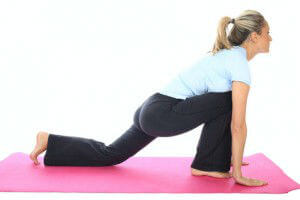
Perhaps one of the most-used excuses for skipping a workout is, “I don’t have the time.” And while for some that excuse is merely a way to avoid any type of exercise, for others time really is a major limiting factor. This especially rings true when you have to commute to a gym and wait in line for the equipment.
However, a recent report published in the American College of Sports Medicine’s Health and Fitness Journal may change the way many busy Americans exercise.
The authors of the study noted that many individuals struggle to find enough time to exercise. Competitive athletes particularly have a hard time maintaining their high level of fitness while trying to balance work and family life. And while most are well-aware of the benefits of strength training, few find the time to incorporate a gym session into their already packed schedules.
This dilemma, which affects both elite-level competitors and those just looking to drop a few pounds, inspired trainers at the Human Performance Institute, Division of Wellness and Prevention, Inc., in Orlando, FL to devise a resistance training workout that was both efficient and effective.
The “seven-minute workout” incorporates the high-intensity circuit training technique. During the workout, which should last approximately seven minutes, individuals perform between nine and 12 body-weight exercises at close to maximum effort for 30 seconds with short rest periods of about ten seconds between exercises.
The seven-minute routine can be performed for another round or two depending on the individual’s time constraints, but one circuit, when performed with enough intensity is sufficient to promote fitness gains.
For those skeptical of how a mere seven-minute workout can be beneficial, there is plenty of evidence that proves this short-and-sweet workout can stand up to those longer hours logged at the gym. The intense workout utilizes large muscle groups in each exercise.
When these larger groups are worked together and the rest time between exercises is minimal, certain metabolic changes take place that put the body into a fat-burning mode that can remain in effect for up to 72 hours post-workout. So in essence, you are burning calories well after your workout is over.
Another main benefit of the seven-minute workout is that it effectively boosts VO2 max (maximal oxygen consumption), which is a strong indicator of cardio-pulmonary health. In fact, in an Australian study researchers found that high-intensity interval training is a more efficient means for athletes to gain endurance and VO2 max capacity than by endurance training alone.
Finally, one of the most appealing aspects of this workout is the ease of implementation. The series of exercises all utilize one’s own body weight, meaning no gym equipment is necessary. Since the workout can be performed practically anywhere, the need for finding and paying membership fees for a fitness center aren’t necessary.
And since one circuit of exercises is sufficient to see fitness gains, the time excuse no longer applies. So if you feel your pants getting a little snug these days, pencil yourself in for seven minutes, your body will thank you.
 The Exercises:
The Exercises:
To be performed at high intensity for 30 seconds with 10 seconds of rest between each exercise.
1. Jumping jacks
2. Wall sit
3. Push-up
4. Abdominal crunch
5. Step-up onto chair
6. Squat Lower
7. Triceps dip on chair
8. Plank
9. High knees/running in place
10. Lunge
11. Push-up and rotation
12. Side plank
Note: It is always a good idea to do a brief warm-up of simple stretches prior to intense physical activity – and be sure to get the advice of a physician, particularly if your health is quite poor.
-The Alternative Daily
Sources:
http://journals.lww.com/acsm-healthfitness/Fulltext/2013/05000/HIGH_INTENSITY_CIRCUIT_TRAINING_USING_BODY_WEIGHT_.5.aspx
http://well.blogs.nytimes.com/2013/05/09/the-scientific-7-minute-workout/

